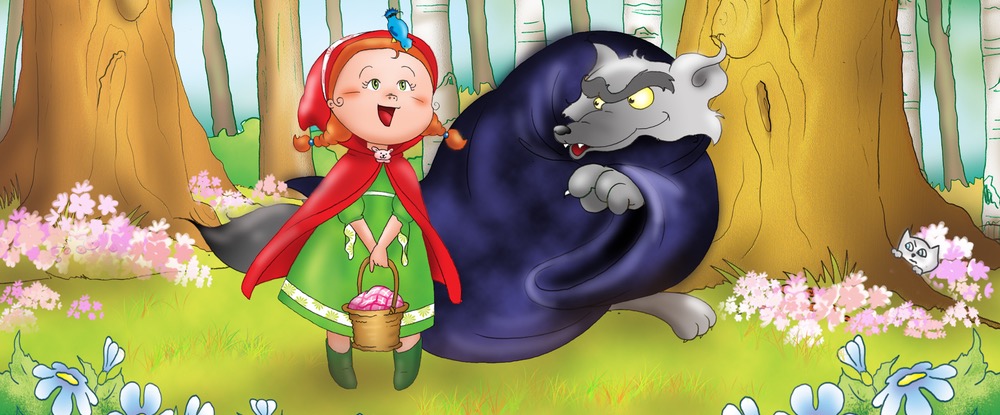
Grades 9-12

Don't have an account yet? Sign up for free
Don't have an account yet? Sign up for free


How do you help students practice safe behavior online? In this lesson, students learn the do's and don’ts through the fairy tale of Little Red Riding Hood. After reading an informational text, the students identify some risky online activities and inform Red why these behaviors can be dangerous. After conducting research, the students create a flyer or poster for Red to use with her after school club where they discuss how to stop and think about risky online decisions, before they connect in order to protect their identity online.
ESSENTIAL QUESTION: What should you do before you share information on the Internet?
TIME REQUIRED: One session of one hour. If you include the optional research of multiple sources, add another fifteen minutes at least (if you are viewing as a whole group) or half an hour (if you wish to have students view independently at a computer lab with their own devices.)
In order to be safe online, students need to consider the cybersecurity rules: Stop, Think, Connect . In other words, they need to stop and think about the risks of sharing information before making a decision to share information or connect online. In this lesson, students consider the risks associated with playing online. What are some of the things you need to think about before you connect? For example, when you are on social media and take a BuzzFeed, "Which-Harry-Potter-character-are-you" quiz, what PII (Personally Identifiable Information) are you sharing? When you give out any information online, there is a risk that you are giving away your privacy and making yourself vulnerable to predators.
The first part of this lesson is based on an Internet classic, "On the Internet, nobody knows you’re a dog." This is a popular Internet classic that shows a dog typing on the computer, meaning that you never know who is at the other end of the message you are receiving.
Instead of using real online predators, this lesson is child-friendly and uses the Big Bad Cyberwolf. All her life, Little Red Riding Hood has been warned to not talk to strangers. However, she likes to play online and is worried that the Big Bad Wolf might try to talk to her when she is playing. Students will read a letter from Red (Little Red Riding Hood’s granddaughter) that outlines a problem she identifies about risky online behavior. In order to help Red avoid the Big Bad Cyberwolf, students will read an article about the risks of sharing information online. Then they will create informational posters to share.
We suggest sending home the parent letter before teaching the lesson.
1. Ask: What does it mean to be safe? When you walk down the street or play in your neighborhood without a trusted adult there, how do you stay safe? Tell students that just as they should stay safe in the real world, they should stay safe when they go into the online world (visiting websites). Make parallels between the answers students gave you about their neighborhood and the online world.
2. Slide 2 – Online Profiles: Provide students with Visual 1 – Online Profiles. Say: When people work online they create profiles. We are going to look at two examples of online profiles. Tell them that they have two minutes to turn and talk to a partner about what they think the individuals look like based on the information on the profiles.
3. Slide 3, Visual 2 – Wolf from Little Red Riding Hood. Project Visual 2 – Wolf from Little Red Riding Hood. Ask students how different this looks from how they visualized the people based on the online profiles. Tell them that when you are online, you never know whether people are telling the truth about their identities. Just like the wolf pretended to be Little Red’s grandma, adults can pretend to be a child online. (If they are unfamiliar with the story, you can read them this children’s version of Little Red Riding Hood.) Ask: In the story of Little Red Riding Hood, what was her risky behavior? [Sharing personal information with strangers.]
4. Slides 4 and 5, Handout 1 – Letter from Red. Tell the students that they are going to learn about risky online behaviors so they can help Red, the granddaughter of Little Red Riding Hood. You can project the letter to read as a class and provide handouts that students can use to mark the text (underline, circle, take notes of important facts). Before reading, tell students that they are going to try to figure out Red’s problem. While reading the letter with the class, stop and define/review the disciplinary vocabulary: risks (the chance of loss or harm), costs (losses due to an action taken or decision made), and benefits (gains received because of an action taken or decision made).
5. After reading, students discuss Red’s problem. [Jack told her by choosing to message her game friends, she was talking to strangers.] Did she consider the benefits and costs?[ No.] What was a benefit of her choice? [She played games, enjoyed apps, and communicated with her game friends.] What were the costs of her choice? [She shared her private information with strangers.] Ask: What is a cyberstranger? Then ask students to brainstorm some risky behaviors Red should avoid in order to protect herself against cyberstrangers like the Big Bad Cyberwolf.
6. Distribute Handout 2 – On the Internet, Nobody Knows You Are a Dog. Tell students that they are going to conduct research about online safety by reading a text about the risks of sharing information with online cyberstrangers. This informational text is broken into sections so students can read, record, and review their ideas with the class.
7. After Viewing, ask: What common information are people asked to share online? [Name, age, email, where you live, are you a boy or girl.] Why do you think they wanted that information? What is the risk of sharing the information with cyberstrangers? [You don’t know who the person really is.] What should you always do before connecting with someone you meet online? [Ask your parents or guardians before you connect with a cyberstranger.]
Review the information students included in their projects. Ask: What is the difference between Personal vs. Private information and what information is risky to share? [Private information is risky to share: full name, address, telephone number, age, birthday, or school. Sharing personal likes and dislikes is less risky but you are still providing information to cyberstrangers.] Why is it risky to become friends with a cyberstranger? [Someone could pretend to be someone else online. You don’t know the identity of someone contacting you online.] What is the most important rule for staying safe? [Never agree to meet with someone you met online.]
This may be a good time to introduce kids to popular questions asked on chat groups and online. When entering a new chat room it is common for a child to be asked simply Susie, a/s/l? How do you answer A/S/L (age, sex, location)? Many kids get rattled and will provide the real answer. Arm kids with witty replies that they can use that will not make them “uncool” but also will allow them to hide their private information. For example:
Old enough to know to keep my age to myself
I am here to talk about Pokemon, not to exchange information
I am a citizen of the world
Ask students to work in small groups to discuss times where they were asked to share information when they were playing with apps, games, or other online activities. Ask students to make up funny replies they can use when asked about their personal and private information.
And emphasize: NEVER agree to meet with someone in person who you met online!
Say: Let’s look back at the letter from Red. What did she want us to do? Tell students that they are going to use notes from what they learned in the lesson and create posters, flyers, tip sheets, or infographics to share. Use the Rubric to evaluate their understanding.
1. Using the information students gathered in the lesson, students will create posters, flyers, tip sheets, or infographics to distribute around the school. Remind students that they need to include as much important information as possible to help other students stop and think about the risks before they share or connect.
2. Optional:
a. Students can use word processing or an online application, such as the ReadWriteThink Printing Press for their projects.
b. If you want students to use multiple sources, they can conduct some research about avoiding risky online behaviors. They can use the following web resources to gather more information. Discuss the importance of using reputable sources from known agencies.
i. Stop Think Connect: Cybersecurity for Kids tip sheet from the Department of Homeland Security.
ii. Net Cetera Stop and Think video from the Federal Trade Commission.
iii. Safe Online Surfing Game by the Federal Bureau of Investigation.

Grades 9-12

Grades 9-12

Grades 9-12

Grades 9-12
